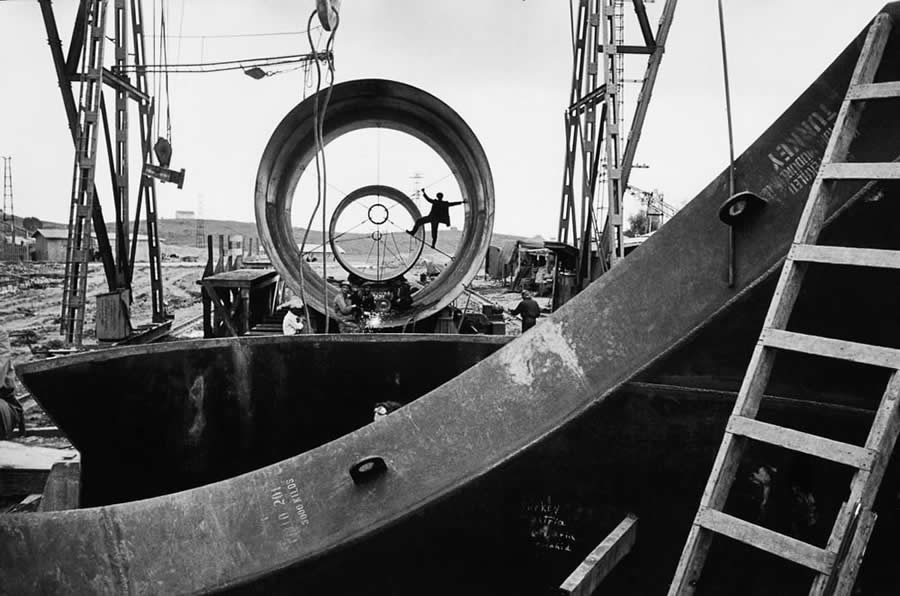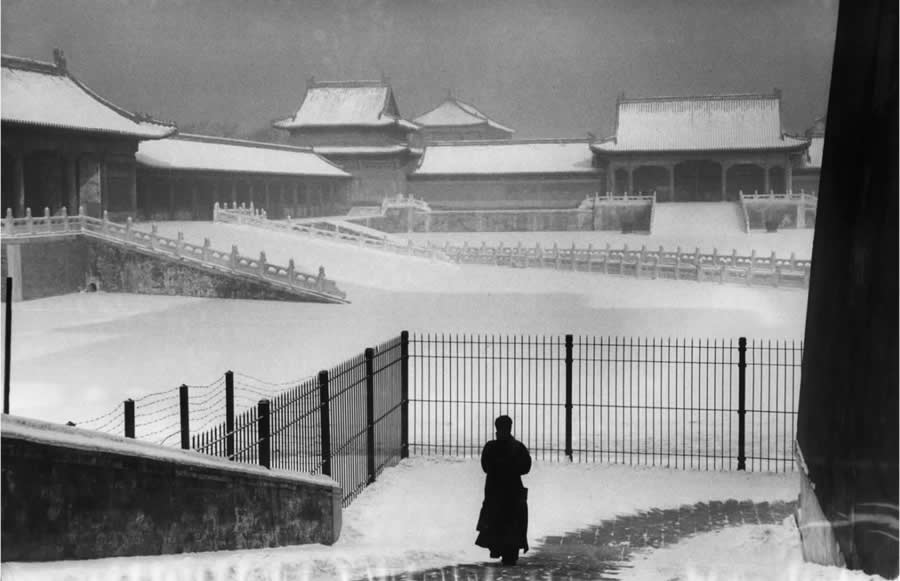Marc Riboud (1923–2016) was more than a photographer—he was a visual poet, a traveler with a quiet lens, and a chronicler of humanity in its most candid and profound moments. As one of the prominent members of the Magnum Photos agency, Riboud gained international acclaim for his ability to capture fleeting moments of beauty, resistance, and cultural transformation. His images—often black and white—were elegant, spontaneous, and deeply human, drawing viewers not only into a scene but into a feeling.

Riboud’s journey in photography began almost by chance. After receiving a small Leica camera from his father, he took a now-iconic photograph of a painter atop the Eiffel Tower in 1953. That image, infused with lightness and lyricism, set the tone for the rest of his career. His work took him across the globe—to the industrial heartlands of England, the rural and urban landscapes of China, the streets of Vietnam during wartime, and the deeply symbolic marches of peace in the United States.
While he never sought the spotlight, Riboud’s photography was always timely, sensitive, and unintrusive. His images weren’t driven by shock or spectacle but by a humanist approach—he believed in watching, waiting, and understanding before clicking the shutter. He captured conflict without glorifying it, and joy without idealizing it.
In an age of speed and oversaturation, Marc Riboud’s legacy reminds us of the enduring power of patience, empathy, and storytelling. He didn’t just take pictures—he revealed truths.
You can find more info about Marc Riboud:
#1

#2

#3

A Magnum Force: Joining the Legendary Photo Agency
Marc Riboud’s career took a decisive turn in 1953 when he joined the esteemed Magnum Photos agency. Under the mentorship of Henri Cartier-Bresson and Robert Capa, Riboud honed his instinct for composition and timing. Magnum, known for its commitment to documentary truth and artistic freedom, was the perfect platform for his emerging vision. Riboud quickly became known for his ability to frame quiet moments with elegance, contributing to major publications like Life, Stern, and Paris Match. His approach, marked by curiosity and compassion, aligned perfectly with Magnum’s mission to tell human stories with integrity.
#4

#5

#6

Iconic Image: “The Girl with the Flower”
One of Riboud’s most enduring images is “The Girl with the Flower,” taken during an anti-Vietnam War protest in Washington, D.C., in 1967. The photograph shows a young woman, Jan Rose Kasmir, gently offering a flower to a line of bayonet-wielding soldiers. It became an emblem of peaceful resistance and the youth movement of the era. The image’s power lies in its grace and symbolism—a flower confronting violence, a moment of calm in chaos. Riboud’s ability to find beauty and significance amid tension elevated this photograph into the realm of cultural iconography.
#7

#8

#9

The Far East: A Pioneering Eye in China and Vietnam
Riboud was one of the first Western photographers to be granted extensive access to China in the 1950s and again during the Cultural Revolution. His respectful, observant perspective revealed the daily lives of workers, students, and farmers under communist rule. Rather than pursuing political angles, Riboud focused on human experiences, allowing viewers to draw their own interpretations. Similarly, his coverage of North and South Vietnam—at a time when the war dominated headlines—offered a quiet, nuanced contrast to the usual graphic imagery of conflict. His photos reflected the people behind the politics.
#10

#11

#12

Capturing Industry and Labor with Dignity
In addition to global travels, Riboud also turned his lens toward industry and labor. His early work in post-war England’s industrial cities showcased factory workers and machinery with a painterly touch. His ability to find beauty in toil—and dignity in the working class—was evident in his photographs of shipyards, smokestacks, and machine lines. These weren’t merely documentary images; they conveyed form, light, and rhythm. Riboud’s compositions echoed his belief that everyday life and labor deserve as much attention as grand historical moments.
#13

#14

#15

A Humanist with a Quiet Lens
Unlike many photojournalists driven by speed and urgency, Riboud embodied a more contemplative style. He preferred to wait, observe, and let moments unfold naturally. His subjects were rarely staged, and his presence almost invisible. Whether photographing children playing in the streets of Istanbul or monks in Kyoto, Riboud was a witness rather than a narrator. This subtlety became a hallmark of his work. As he once said, “Taking pictures is savoring life intensely, every hundredth of a second.” His camera became a tool of empathy.
#16

#17

#18

Awards, Legacy, and Influence
Over his six-decade career, Riboud received numerous accolades, including exhibitions at MoMA in New York, the Musée d’Art Moderne in Paris, and a Lucie Award for lifetime achievement. Yet he remained humble, preferring to speak through his images. Today, his influence resonates in the work of photographers who value quiet observation over spectacle. Riboud taught the world that true visual storytelling doesn’t always need drama—it requires presence, patience, and a deep respect for the subject. His archives continue to inspire journalists, artists, and historians alike.
#19

#20

Conclusion: Marc Riboud’s Timeless Vision
Marc Riboud leaves behind a legacy not just of remarkable images, but of a philosophy—one that values humanity, subtlety, and sincerity in photography. His body of work spans continents and decades, yet it never loses sight of the individual moments that define our shared human experience. In a world increasingly crowded with images, Riboud’s photographs stand out not through noise, but through quiet power. He captured the world as it was, and in doing so, helped us see how beautiful it could be. His vision endures—timeless, tender, and true.




